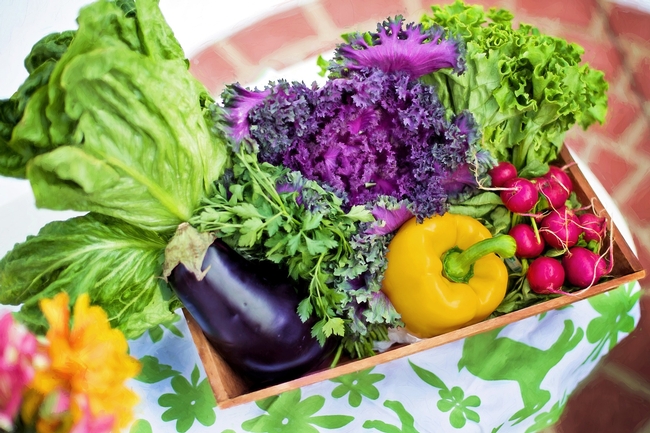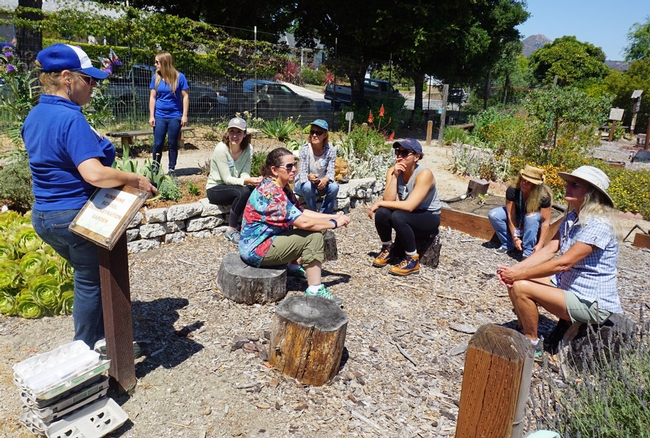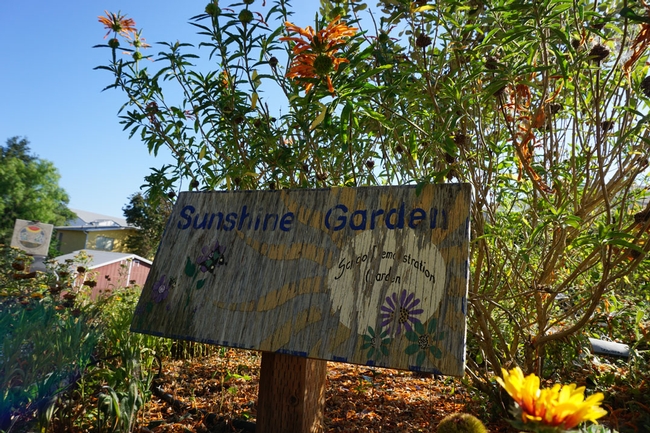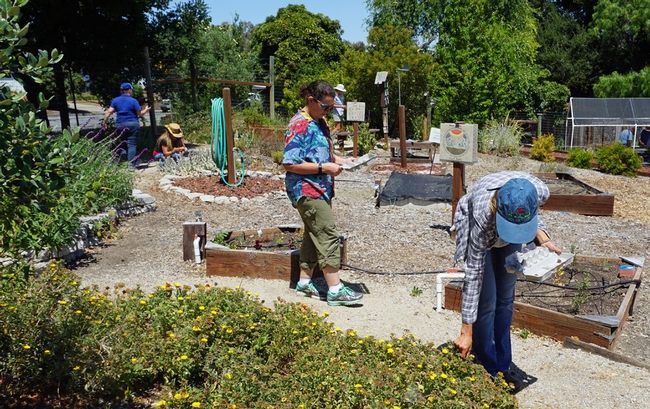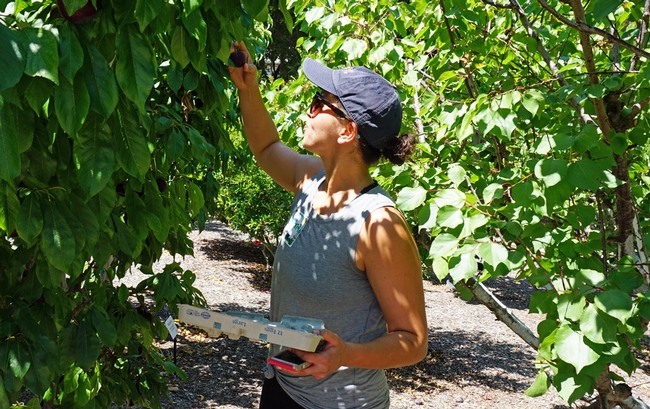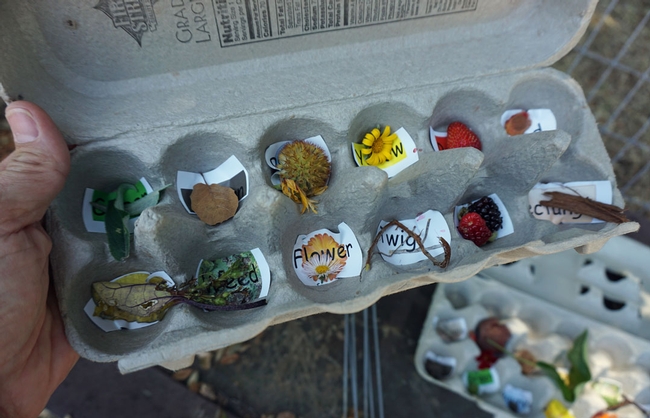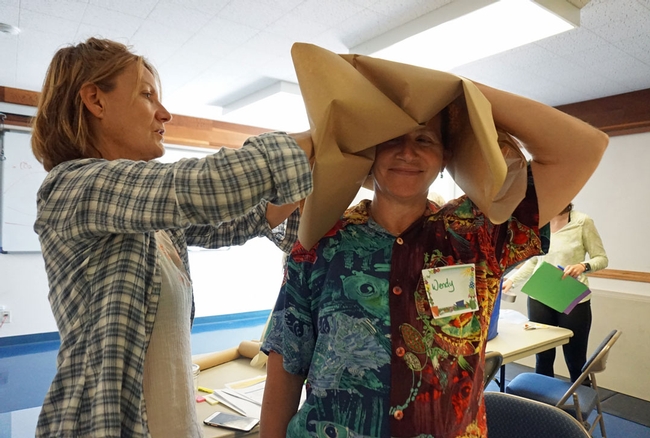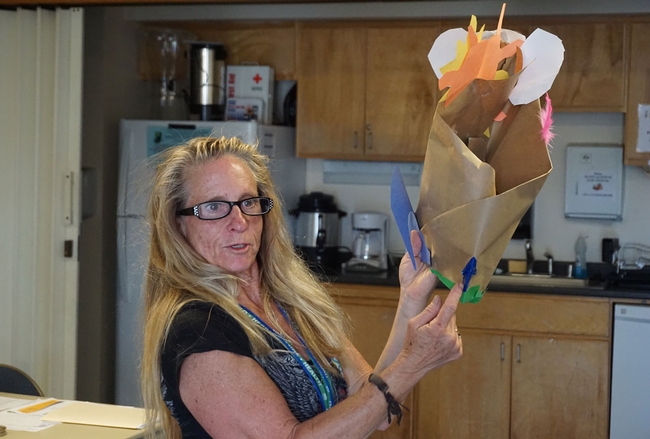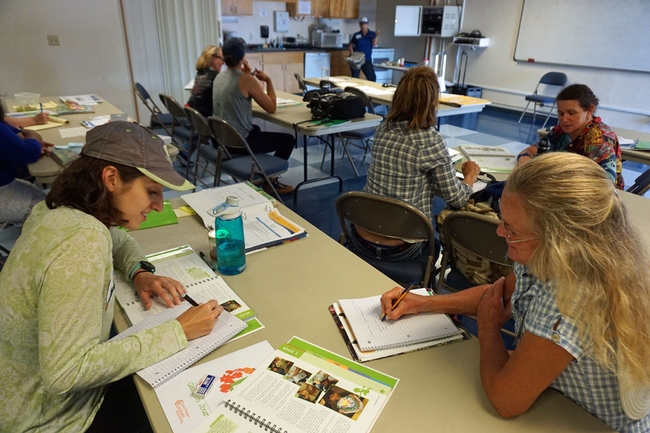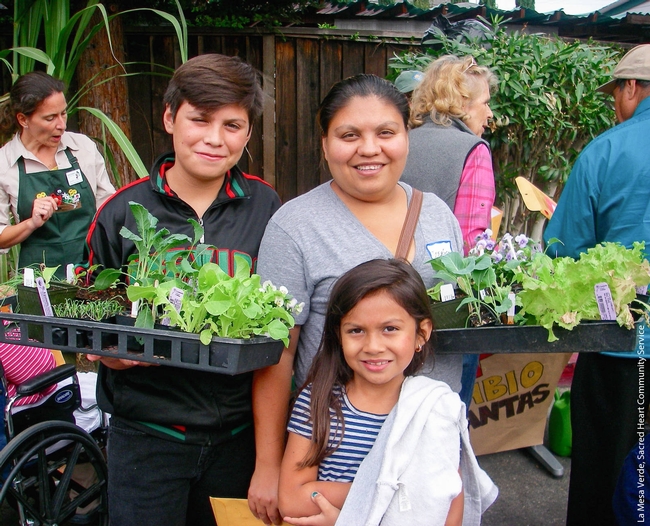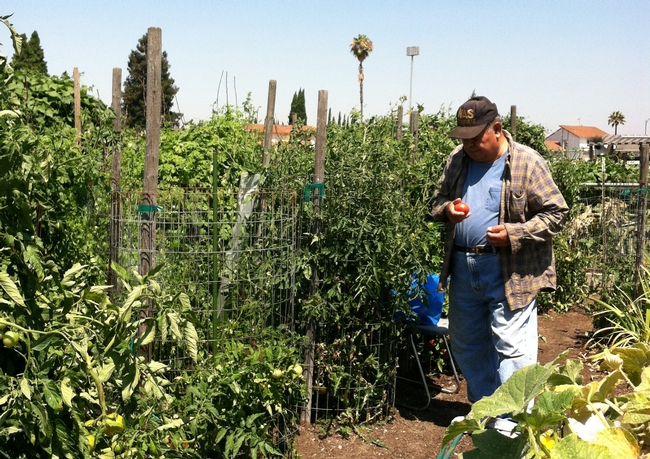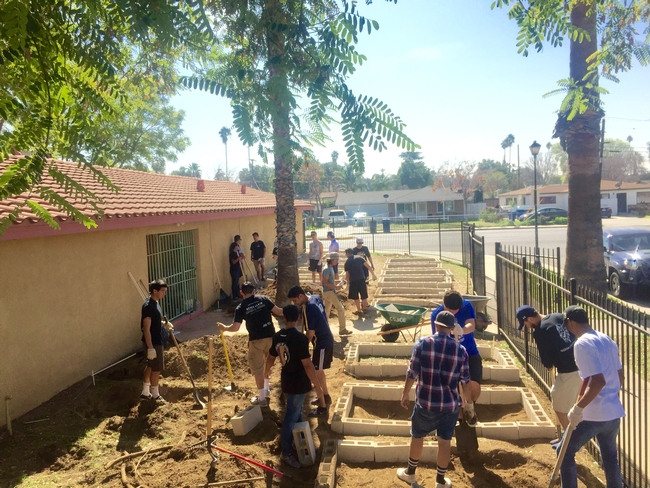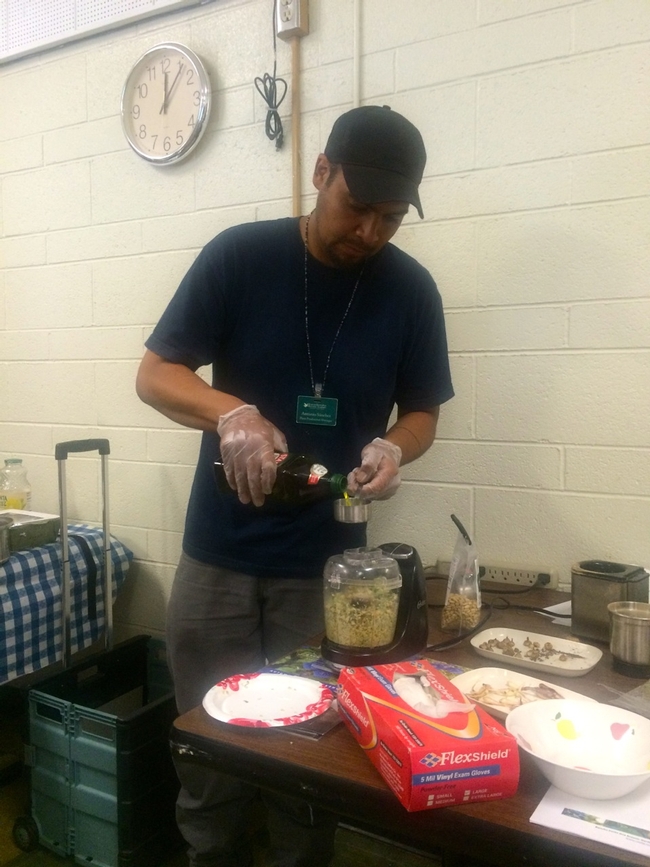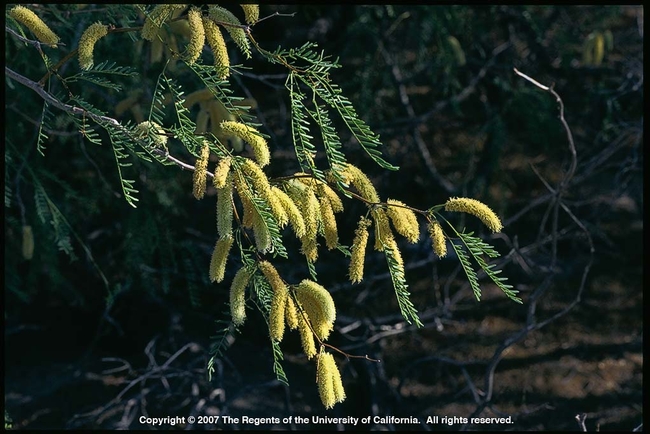Posts Tagged: gardens
Grow it: Gardening tips and resources
Gardening is fun…and it's an important activity. What we grow in school, home and community gardens can improve our health, and the health of our families and communities. What we grow can increase the resiliency of food systems in our communities. And what we grow, ultimately, can connect us more closely with the earth that sustains us. There are valuable lessons in gardening…too many to list here.
Even if you live in a small apartment, you can grow food. If you have a yard, you can grow quite a lot of food. View the transformation of a front yard in an urban area…from lawn to lush, productive food garden in only 60 days. You'll love the progression photos, and the simple explanation about how the garden came together.
Need more inspiration? Roger Doiron, founder of SeedMoney, talks about his (subversive) garden plot in this remarkable TedX talk. Roger created and led the social media campaign that called for a garden at the White House. This campaign ultimately led First Lady Michelle Obama to plant a vegetable garden at the White House. (And it may have also inspired the People's Garden at the USDA, which broke ground on Abraham Lincoln's birthday 10 years ago. Lincoln referred to the USDA as the “People's Department,” so it makes sense that the USDA would refer to its garden as the “People's Garden.”)
Need practical advice? The UC Master Gardener program has more than 5,000 certified volunteers ready to assist if you live in California. UC has also created a California Garden Web portal that provides a treasure trove of gardening resources for all parts of the state. It's not too early to begin planning your Fall garden, and you'll find information about that, too.
If you're interested in school gardens, read this brief history, written by UC ANR's UC Food Observer.
Happy gardening!
School gardens get new life from UC Cooperative Extension volunteers
When children grow their own fresh fruits and vegetables, they are much more likely to eat healthy food, so for decades California politicians, teachers and nutrition educators have advocated for a garden in every school. However, UC Cooperative Extension experts in Santa Barbara and San Luis Obispo counties found that garden care can dwindle over time.
“Students and their parents ‘age out' of their elementary schools,” said Shannon Klisch, UC CalFresh community education supervisor in San Luis Obispo and Santa Barbara counties. “The turnover in expertise and level of commitment can vary widely, leaving some schools with either weedy, abandoned vegetable patches, or no garden support at all.”
UCCE offers UC CalFresh, federally funded nutrition education for CalFresh recipients (formerly called Food Stamps). UC CalFresh nutrition educators in Santa Barbara and San Luis Obispo counties saw a need to mobilize highly trained community members who could develop, support, sustain and teach from school gardens. UC CalFresh joined with UC's 4-H Youth Development, Master Food Preserver, and Master Gardener programs to launch a pilot project called “UC Garden Nutrition Extenders.”
“We don't have enough staff to work the gardens in every school, so we've started recruiting and training volunteers,” said Lisa Paniagua, school garden sustainability coordinator for the UC Garden Nutrition Extender program in San Luis Obispo and Santa Barbara counties.
“By enlisting passionate volunteers, nutrition educators could significantly multiply the number of students who had access to school gardens, nutrition education, and training in science, technology, engineering, and math (STEM) in the garden,” said Katherine Soule, Ph.D., youth, families, and communities advisor in San Luis Obispo and Santa Barbara counties.
Klisch said UC Garden Nutrition Extenders are local members of their school communities.
“They are often parents, neighbors or staff and they have a personal investment in seeing the youth and the school environment flourish, which makes for a much more sustainable intervention and increases community capacity to sustain a garden program," she said.
Paniagua, Klisch, and Soule created a hybrid training program integrating volunteers and educators from UC CalFresh, UC Master Food Preservers, UC Master Gardeners and 4-H. They selected a 4-H gardening and nutrition curriculum written by researchers at Texas A&M AgriLife Extension, which includes engaging, student-centered, experiential learning while dividing time between the garden and the classroom. The curriculum reinforces goals in Common Core and Next Generation Science Standards, policies that guide public school teaching.
“Teachers will want to know we are familiar with curriculum standards. Applying them adds value to these classes,” Paniagua said.
In July, the third cohort of future UC Garden Nutrition Extender volunteers gathered at UC Cooperative Extension in San Luis Obispo to learn how they can help schools transform their gardens into fruitful learning activity centers for the students.
One member of the new cohort is Jill Marie, a certified Master Gardener in San Luis Obispo County.
“I live by a school and they have garden beds that are not kept up. I want to get involved and get to know the kids,” she said.
The volunteer teachers learn by conducting the indoor and outdoor curriculum activities and food demonstrations over a four-week period. Their first foray into the UCCE Sunshine School Demonstration Garden began with a mindfulness practice.
“Close your eyes, and just listen,” Paniagua instructed. A moment later she asked, “What did you hear?”
To encourage students to take a closer look at the garden, the class was sent out with egg cartons labeled for a 12-item scavenger hunt, and later asked to select one item to discuss. Reporting on topics are part of Common Core standards for students in third- through fifth-grades and creates discussion learning topics around science, math, engineering, art, and even poetry.
Back in the classroom, the trainees began work in pairs on the next lesson, “Know & Show Sombrero.” With paper, tape and a bag of craft supplies – balloons, ribbons, foam stickers and construction paper – the extenders made hats that represent everything a plant needs. One group used a yellow balloon to symbolize the sun, another had water drops raining down from the brim. A third group sprinkled glitter to represent the nutrients in the soil.
“Why are we putting these on a hat?” Paniaqua asked the class. “The exercise is useful for kinesthetic learners. It reinforces what they learn. At the end, we talk about it and develop conversation skills.”
The half-day session ended with a tasting of purple, yellow and orange carrots.
“In your journals, write words to describe the smell, sight, taste and feel of the three colors of carrots,” Paniagua said.
One of the volunteers Christina Lawson, director of nutrition for Coast Unified School District, laughed.
“We tried to serve purple carrots. Pfft. Zip,” she said. “I'm excited about this. If the kids try them before coming to the cafeteria, it would make my life so much easier.”
This project is funded through local grant awards from the National 4-H Council in collaboration with Lockheed Martin, and UC CalFresh Nutrition Education Program, which is a joint agreement among the U.S. Department of Agriculture/Food and Nutrition Service (USDA/FNS), the California Department of Social Services (CDSS) CalFresh branch, and the University of California Cooperative Extension (UCCE).
Community and home gardens improve San Jose residents’ food security
Participants in the pilot study, published in California Agriculture journal, reported doubling their vegetable intake to a level that met the number of daily servings recommended by the U.S. Dietary Guidelines. Meals rich in fresh fruits and vegetables are lower in calories and higher in fiber and part of a healthy diet.
About 13.5 percent of California households face food insecurity – reduced quality, variety or desirability of diet and, in some cases, reduced food intake – according to a 2014 USDA Economic Research Service study.
Although Silicon Valley is one of the wealthiest areas of the state, some parts of Santa Clara County have “food deserts,” low-income neighborhoods without grocery stores stocked with fresh fruits and vegetables at affordable prices. Even in neighborhoods with grocery stores, residents may have less to spend on food after paying rising housing costs.
“Gardening made a substantial contribution to vegetable intake regardless of socioeconomic background or previous gardening experience,” said co-author Lucy Diekmann, a postdoctoral researcher in the Food and Agribusiness Institute at Santa Clara University.
Growing food saves money
UC Cooperative Extension surveyed 85 community gardeners and 50 home gardeners in San Jose. The gardeners surveyed were generally low-income and came from a variety of ethnic and educational backgrounds. The survey was available in English, Spanish and Chinese.
By growing their own food, home gardeners saved on average $92 per month and community gardeners saved $84 per month.
A number of programs in California, including Sacred Heart Community Services' La Mesa Verde, help low-income families establish their own vegetable gardens. As of 2013, Supplemental Nutrition Assistance Program (SNAP) benefits can also be used to purchase seeds and plants so that low-income households can grow their own produce.
One gardener in the La Mesa Verde program told the researchers that without the savings and access to homegrown vegetables, she would have struggled the previous year. Her garden significantly supplemented her diet.
Wider variety of fresh produce
Tomatoes, cherry tomatoes, peppers, green beans and cucumbers were the most common crops grown by community gardeners. La Mesa Verde families were given seeds and plants to grow tomatoes, peppers, beans, basil, zucchini, radishes, cucumbers and eggplants.
Culturally favorite foods were also grown by San Jose's ethnically diverse residents in both community and home gardens. They grew crops including chayote, bitter melon, goji berries, green tomatoes, fava beans, okra, collards and various Asian vegetables, such as bok choy and mustards.
Gardeners in both groups gave excess produce to their friends and family members.
Growing demand for gardens
For the study, the authors collaborated with the San Jose Parks, Recreation and Neighborhood Services Department, which runs the city's Community Garden Program. The city operates 18 community gardens that serve more than 900 gardeners and occupy 35 acres in San Jose, yet there is growing demand for more gardening space.
“One of the challenges to starting a garden, particularly for low-income gardeners, is a lack of adequate space,” said Diekmann. “La Mesa Verde gardeners are advocating for San Jose to adopt Urban Agriculture Incentive Zones so that more San Jose residents can have space to garden.”
The study was conducted by UC Cooperative Extension advisor emeritus Susan Algert, Leslie Gray of Santa Clara University, Marian Renvall of UC San Diego Department of Medicine and Diekmann, whose participation in this study was funded by a USDA NIFA Agriculture and Food Research Initiative postdoctoral fellowship.
To read the full report in California Agriculture, visit http://ow.ly/wfWX300Dbzj.
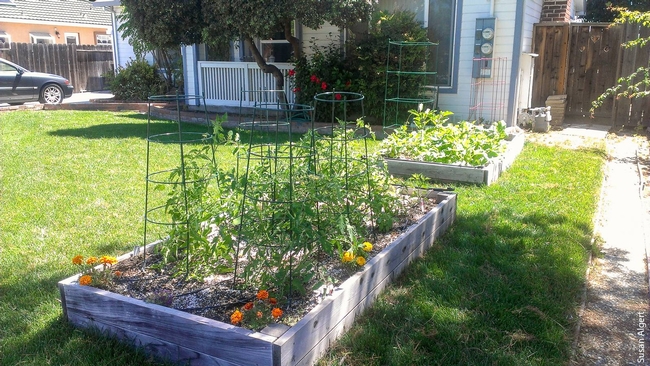
SNAP benefits can be used to purchase seeds and plants to grow produce.
UC Cooperative Extension takes community gardening to a new level in Riverside
UC Cooperative Extension in Riverside County is bringing together students, agencies, nutrition educators and gardening experts to work alongside families to grow produce in garden plots at a community facility.
“Many people don't know how to get started gardening,” said Chutima Ganthavorn, the nutrition, family and consumer sciences advisor for UCCE and manager of its local UC CalFresh Nutrition Education Program. “Gardening takes space, water, resources like seeds and transplants, plus guidance and support. Our group is going the extra mile in Riverside County to help people grow and eat healthy food.”
This year, the local coalition received $10,000 in support from the Kaiser Permanente Heal Zone project to expand a vegetable garden at the Community Settlement Association (CSA), a center where community members gather for UC CalFresh nutrition classes, weekly food distributions and other services.
“A few years ago, the garden plots at the Community Settlement Association were neglected and weedy, while families struggled to get healthy food,” Ganthavorn said. “UC CalFresh teamed up with UCCE Master Gardeners and CSA staff to turn them into bountiful and beautiful edible gardens. Now our coalition is growing to include UCR Community Garden and Heal Zone members, including folks from City of Riverside Parks and Rec and Riverside Community Health Foundation.”
In 2014, UC Master Gardener volunteers, nutrition educators and members of the community planted vegetables in five existing garden boxes at Community Settlement Association, 4366 Bermuda Ave. in Riverside.
For planting day, neighborhood families – many who had taken part in UC CalFresh nutrition classes at the CSA – tilled the ground and planted seeds and transplants to grow tomatoes, bell peppers, summer squash, lettuce, green beans and Swiss chard.
“We're fixing up a garden for the children,” said Gonzalo Rodriguez, who joined planting day with his family. “We're planting chili and tomato transplants and seeds, food that will provide vegetables and give the children the joy of caring for the plants.”
In 2015, UC CalFresh arranged a $500 grant from Wood Streets Green Team, a local group that promotes sustainable living, to purchase fruit trees. Master Gardeners led volunteers to plant blackberry bushes, and peach, pluot, nectarine, plum, fuji apple and mini mandarin trees. They also planted quince, pomegranate, lemon and lime trees donated by a Master Gardener.
With the Heal Zone funds and support from UC Riverside student Claudia Villegas, the recipient of a Global Food Initiative Fellowship from the UC Office of the President, an extended garden began to take shape.
Villegas recruited students from Sigma Alpha Epsilon and Phi Chi Theta fraternities to transform a lawn at the community center with cinderblock raised beds. She is coordinating training sessions and encouraging local families to visit.
“I want the community to feel comfortable coming to the garden,” said Villegas, a senior psychology major. “I want them to just come in and hang out and interact and talk about gardening problems.”
The raised-bed plots have been assigned to families in the community.
“They feel ownership and maintain the gardens,” Ganthavorn said. “They can keep the produce they grow, and any extra produce goes to the weekly food distribution program at CSA.”
A gardening club now meets from 9 to 10 a.m. the first Thursday of each month at the community garden. UC Cooperative Extension coordinates gardening workshops with UC Master Gardener volunteers and nutrition and cooking sessions with UC CalFresh educators.
A 4-H club for children in the community is also being developed at the CSA site by Claudia Diaz Carrasco, UCCE 4-H Youth Development advisor. The purpose of 4-H clubs is to help diverse young people discover and develop their potential and grow into competent, contributing, and caring citizens.
“We believe that CSA children will benefit a lot by participating in 4-H learn-by-doing activities within the club,” Diaz said. 4-H clubs usually meet in the evenings or on weekends and offer self-chosen multiple learning experiences.
Will edible native plants be a new food trend?
Will edible natives plants be a new food trend, the ultimate in eating locally? Antonio Sanchez at the Rancho Santa Ana Botanic Garden in Claremont hopes so. Among California native plants are many overlooked food sources, some with gourmet potential, according to Sanchez, production manager at the garden. As an added bonus, edible natives are often low-water users that look great in landscapes. He recently gave UC Master Gardeners in Los Angeles County an overview of edible natives, and had them taste some of his favorites, including his recipe for Cleveland Sage Pesto.
There are six native plants that Sanchez thinks are especially worth checking out.
- Miner's lettuce (Claytonia perfoliata). It's easy to grow and found throughout much of California. Its leaves can be used in salad, soup, or pesto. (It can also be a weed in certain situations, according to UC IPM).
- Cleveland sage (Salvia clevelandii). A beautiful, drought tolerant ornamental, it can also be used in pesto, beer, ice cream and baked goods.
- One-leaf onion (Allium unifolium). All parts of this native onion are edible.
- Honey mesquite (Prosopis glandulosa var. torreyana). Dried pods can be ground to make a gluten-free flour.
- Roger's California grape (Vitis ‘Roger's Red'). This plant, which was recently determined to be a hybrid between a native California grape and a cultivated grape, produces small, sweet fruit with seeds that can be eaten fresh, or used for juice or jelly.
- Golden currant (Ribes aureum). Fruit can be eaten fresh or made into jelly.
Adventurous cooks, gardeners, foragers, and anyone else who want to learn about edible native plants can attend the upcoming California Native Food Symposium, which will be held on November 14and 15 at the Rancho Santa Ana Botanic Garden.
The author is Rachel Surls, sustainable food systems advisor for UC Agriculture and Natural Resources Cooperative Extension in Los Angeles County.


